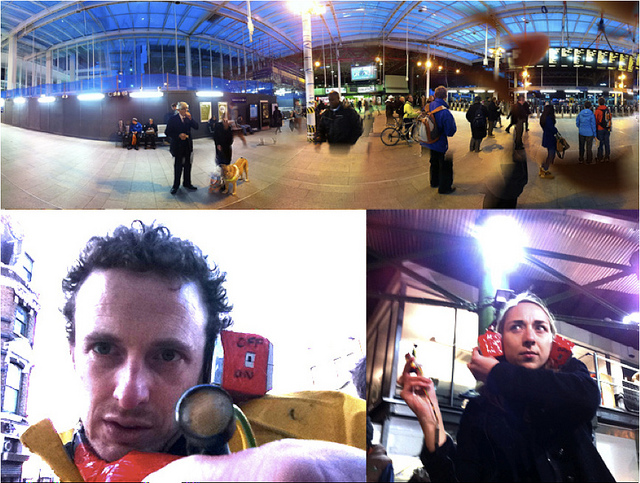Photophone

An investigation into wireless communication drawing inspiration from Alexander Graham Bell’s Photophone, that allowed for the transmission and reception of sound over a modulated beam of light. After finding simple instructions online I proceeded to build my own version, where I wirelessly transmitted the audio output of an old MP3 player to a small set of speakers via a flickering LED. I quickly discovered that different light sources would generate their own signature sound. This encouraged me to convert the device so it would work as a pair of headphones so my hands would be free to easily search for interesting sounds and lights in public environments. A video display within a train station, for example, generates a soundscape of quickly changing pulsating sounds.
Observations: London Bridge & Borough Market

I took the device to London Bridge Station and borough market, where I wore the headphones, and held the receiver up to different lights, a synesthetic experience that completely changed my perception of the environment. A giant LED screen generated rhythmic pulsing sounds as images changed, each shop on the concourse emitted a slightly different buzz or hum, flashing lights would create rhythm and sunlight was silent. When I showed the device to members of the public, I discovered they were more intrigued with audio transmission from the MP3 player than with the buzzes and hums created by lights.
Observations: Fisbury park

I took the device and presented it at a workshop in Finsbury Park and again, people responded with a sense of amazement when demonstrating audio transmitted through the air over a beam of light, this then drew people into exploring the sounds generated by a projector, halogen, LED and Fluorescent light sources. As part of the workshop, I walked around Finsbury Park (with the headphones on), and made chalk marks whenever I found an interesting sound. Annotating the environment felt like I was taking control of the space, making it my own, though I felt self-conscious and had an urge to ‘look official’ the whole time I was wearing the headphones.
The build
Transmitter components:
LED, 9v Battery, 470 ohm resistor, 10uf Capacitor.
Receiver components:
Photo resistor, 230ohm resistor, 9v battery, Speakers.

Observations: The build
I had a spark of excitement when building the analogue circuit without a microcontroller. It felt easier to comprehend the full set of components and their individual roles. I discovered that the LED could be replaced with a laser, enabling transmission over long distances. Also, if the laser was reflected against a window, it would be modulated enough by sound waves occurring within a room that we could hear the sounds outside, a development that could take the project into many contexts.